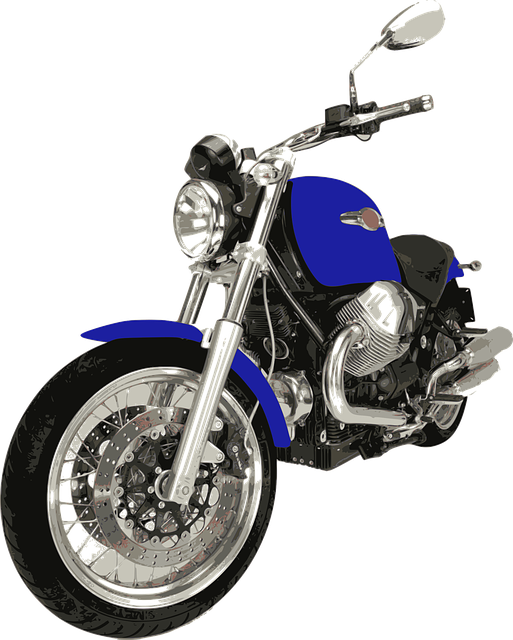The maintenance and health of a motorcycle battery are critical for ensuring smooth operation and preventing unexpected breakdowns. Regular monitoring and understanding the factors that affect its lifespan, such as climate, usage patterns, and maintenance practices, are essential. A healthy battery should read around 12.6 volts when idle and above 12.4 volts while running, as measured by a multimeter. Early detection of issues like prolonged starting times, dim lights, or the need for a jump start can save from more significant problems. Using a load tester to verify current supply is also recommended. To extend battery life during inactivity, employ maintainers or trickle chargers.
In case of issues, perform a visual inspection for physical damage or corrosion, clean any corroded terminals, and then use a multimeter to check the voltage. A low voltage might indicate the need for charging or replacement. If all electrical components are functioning correctly but the battery still fails to hold a charge, it may be time for a new one. For battery failures, know how to safely jumpstart your motorcycle using another vehicle's battery, and always investigate and rectify any conditions that led to the depletion.
Regular maintenance, including voltage checks, load testing, terminal cleaning, and replacing the battery if necessary, is key to preventing future issues. Employing a battery tender or maintaining a charged state when not in use can also help. It's advisable to consult the motorcycle's owner manual for manufacturer-specific guidance on battery care.
For optimal performance and longevity, consider investing in a high-quality battery suitable for your motorcycle's electrical load and the conditions you ride in. AGM or lithium-ion batteries can offer better resistance to extreme temperatures and vibrations. Professional servicing by skilled technicians is also crucial for timely issue resolution and comprehensive battery care. By following these practices, you can minimize the risk of being stranded and ensure consistent, reliable starts for your motorcycle.
Revitalize your motorcycle’s power with our comprehensive guide on reviving dead motorcycle batteries. This article demystifies the common issues behind a depleted battery, offering clear diagnostic steps and jumpstarting methods to restore your ride’s electrical heartbeat. Enhance your knowledge with maintenance tips tailored for motorcycle batteries, ensuring longevity and reliable performance. Whether you’re a seasoned rider or a novice mechanic, this resource equips you with the expertise to maintain your motorcycle battery effectively.
- Understanding Your Motorcycle Battery: Signs of a Depleted Power Source
- Step-by-Step Guide to Diagnosing Battery Issues on Your Motorcycle
- Safe and Effective Techniques for Jumpstarting Your Motorcycle's Battery
- Maintenance Tips to Prolong the Life of Your Motorcycle Battery
- Professional Services and Products for a Long-Lasting Motorcycle Battery
Understanding Your Motorcycle Battery: Signs of a Depleted Power Source

A motorcycle battery, much like its automotive counterpart, is a critical component that powers all electronic functions and ignition systems on your bike. It’s essential to keep an eye on its performance to prevent unexpected issues on the road. A depleted battery can leave you stranded, so recognizing the signs early is key to maintaining the reliability of your motorcycle. Typically, a motorcycle battery’s lifespan ranges from one to three years, depending on factors such as climate, usage frequency, and maintenance. Monitoring the voltage with a multimeter can provide insights into its charge level; a fully charged battery should read around 12.6 volts when not starting the engine, and it should hold above 12.4 volts while running.
If you notice your motorcycle taking longer to start or requiring multiple attempts to turn over, this could be an indication that your battery’s charge is waning. Another sign of a deprived power source is dim or flickering lights, which can manifest in the headlight or dashboard indicators. Additionally, a battery that has been sitting for an extended period without use might need a jump start due to self-discharge. Regularly testing your motorcycle battery with a load tester can help you identify if it’s delivering the correct amount of current. Taking proactive steps like keeping your bike on a maintainers or trickle charger during periods of disuse can prevent the battery from fully discharging and extending its lifespan. Understanding these signs can help you address issues before they escalate, ensuring your motorcycle’s electrical system remains robust and reliable for your next ride.
Step-by-Step Guide to Diagnosing Battery Issues on Your Motorcycle

To diagnose issues with your motorcycle’s battery, a step-by-step approach will help ensure that you accurately pinpoint the problem. Begin by visually inspecting the battery for any obvious signs of damage or corrosion, particularly on the terminals. Clean any corroded connections using a wire brush and battery terminal cleaner to restore a secure electrical connection. Next, check the battery charge level with a multimeter. Set the multimeter to the voltage setting, and connect the probes appropriately: one on the positive terminal and the other on the negative. A fully charged motorcycle battery typically reads around 12.6 volts when the engine is off. If the voltage is significantly lower, the battery may be sulfated or otherwise compromised, indicating a need for charging or replacement.
After verifying the charge level, test the battery’s ability to hold a charge by conducting a load test. Disconnect the battery and connect a battery charger or load tester according to the manufacturer’s instructions. The motorcycle should be running while this test is performed. A healthy battery will maintain its voltage above 10 volts under load. If the voltage drops below this threshold, the battery may have a poor connection, a bad cell, or it could be at the end of its life. Finally, if all electrical connections and components are functioning correctly, but the battery still fails to hold a charge, it’s advisable to replace the battery. Regular maintenance checks can prevent issues from arising, ensuring your motorcycle’s battery remains reliable for your riding adventures. Remember to monitor the battery’s health after replacement or recharge by regularly checking its voltage and condition to avoid future dead batteries on your motorcycle.
Safe and Effective Techniques for Jumpstarting Your Motorcycle's Battery

When a motorcycle battery dies, it can be an inconvenience that disrupts your riding plans. Reviving a lifeless battery safely and effectively requires the right techniques and tools. Before attempting to jumpstart your motorcycle’s battery, ensure that both the motorcycle and the vehicle you’re using to jumpstart have their ignitions off. Connect the positive (red) clamp to the positive terminal on your motorcycle’s battery, and attach the other end of the red clamp to the positive terminal of the donor vehicle’s battery. Then, connect the black (negative) clamp to an unpainted, metal part of the motorcycle that is away from any fuel lines or the battery itself to avoid potential sparks and short circuits. Never connect the black clamp directly to the battery terminals during a jumpstart. Once everything is securely connected, start the donor vehicle and allow it to run for a few minutes. This will supply the necessary electrical charge to your motorcycle’s battery, potentially bringing it back to life. After a sufficient period, carefully disconnect the clamps in reverse order, from the motorcycle to the donor vehicle, and then from the donor vehicle to its battery.
After successfully jumpstarting your motorcycle, it’s crucial to address the underlying issues that led to the battery dying. This may involve charging the battery if it’s not holding a charge, inspecting and cleaning the terminals for corrosion, ensuring there are no drains on the battery when it’s not in use, and possibly replacing the battery if it’s old or damaged. Regular maintenance of your motorcycle’s battery can prevent future occurrences and ensure that your riding experience remains uninterrupted. Always prioritize safety when working with batteries to avoid any accidents or damage to your motorcycle or the donor vehicle.
Maintenance Tips to Prolong the Life of Your Motorcycle Battery

Regular maintenance of your motorcycle battery is key to ensuring its longevity and reliability. To begin with, keep an eye on the battery’s charge level; avoid letting your motorcycle sit idle for extended periods as this can drain the battery. If you’re not riding, consider using a battery tender or maintaining a full charge to prevent sulfation. Cleaning the terminals and ensuring a secure connection is another crucial step. Corrosion on the terminals can lead to poor conductivity, causing your battery to work harder and potentially fail prematurely. Inspect the case of the battery for any bulges, cracks, or excessive corrosion, as these signs could indicate potential issues with the internal structure, which might compromise its ability to hold a charge over time. Additionally, regular testing of the battery’s charge level and ampere output can help catch problems before they become severe. By following these maintenance tips, you can significantly prolong the life of your motorcycle battery, ensuring it remains a dependable source of power for your rides. Remember to consult your motorcycle’s owner manual for specific recommendations on battery care from the manufacturer.
Professional Services and Products for a Long-Lasting Motorcycle Battery

To sustain the longevity and optimal performance of your motorcycle battery, it’s crucial to consider professional services and high-quality products designed specifically for this purpose. Expert technicians can provide a thorough assessment of your battery’s health, ensuring that any issues are identified and addressed promptly. Regular maintenance, such as cleaning corrosion from terminals and checking cell voltages, is part of the professional service package that helps prevent premature battery failure. Additionally, opting for a battery with advanced technology, like those offering AGM (Absorbent Glass Mat) or lithium-ion construction, can significantly enhance your motorcycle’s starting reliability and provide longer life cycles. These modern batteries are also resistant to extreme temperatures and vibrations, common challenges faced by motorcycle batteries on the road. When selecting a battery, consider factors such as the bike’s electrical load and riding conditions to match the right product for your needs. By investing in a professional service and the right type of battery, you can ensure that your motorcycle starts reliably every time, reducing the chances of being stranded due to a dead battery.
Revitalizing your motorcycle’s battery not only extends its lifespan but also ensures reliable starts every time you ride. By understanding the signs of a depleted battery and mastering the diagnosis process, you can proactively address issues before they lead to a frustrating no-start scenario. The step-by-step guide provided offers safe and effective methods for jumpstarting your motorcycle’s battery when needed, while the maintenance tips are designed to help you keep your battery in optimal condition. For those seeking expert assistance or specialized products, professional services can provide a tailored solution to maintain a long-lasting charge. With these resources at hand, reviving and maintaining your motorcycle battery is within reach, keeping you ready for the open road.
